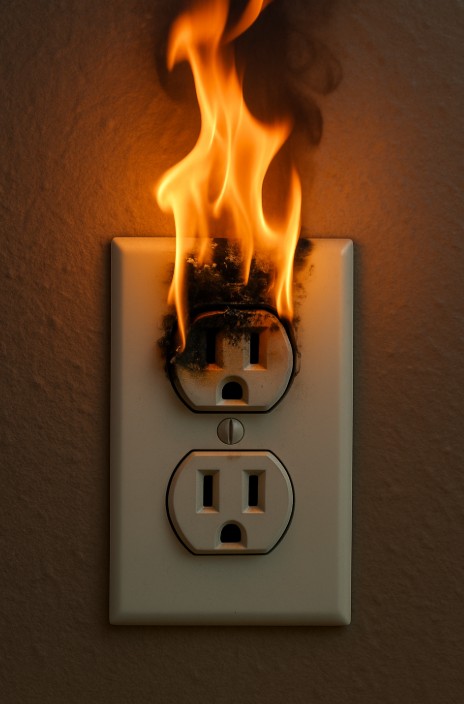If you’ve touched your circuit breaker panel and noticed one of the breakers feels unusually warm—or even hot—you’re right to be concerned. While a slight warmth can be normal during heavy usage, excessive heat may indicate a serious electrical problem that shouldn’t be ignored.
In this post, we’ll explore:
- What’s normal vs. abnormal
- Common causes of a hot breaker
- Safety risks involved
- How to troubleshoot and resolve the issue
What’s Normal for a Circuit Breaker?
Circuit breakers are designed to carry electricity safely through your home’s circuits. It’s normal for a breaker to feel slightly warm during high-demand usage—think air conditioners, space heaters, or dryers all running at once. However, it should never be hot to the touch.
According to the U.S. Consumer Product Safety Commission (CPSC), abnormal heat from electrical components is a key warning sign of an impending fire hazard. [1]
Common Causes of a Hot Circuit Breaker
1. Overloaded Circuit
This is the most common reason. If you have too many high-wattage appliances on one circuit, it can draw more current than the breaker is rated for, causing it to overheat.
🔧 Solution: Unplug some devices or move them to a different circuit. Consider having an electrician install a dedicated line for high-demand appliances.
2. Loose Connections
Loose wires at the breaker terminal or in the panel can cause arcing—tiny sparks that generate a lot of heat over time.
📛 Risk: Arcing is one of the leading causes of electrical fires in homes, according to the National Fire Protection Association (NFPA). [2]
3. Faulty Breaker
Breakers can degrade over time or come defective from the factory. A bad breaker may fail to trip when it should, allowing dangerous heat levels to build up.
🧰 Tip: If the breaker is hot even with little or no load, it may be faulty and needs replacement.
4. Panel Age or Design Flaws
Older electrical panels (like Zinsco or Federal Pacific Electric) are notorious for failing to trip or overheating even under normal loads. These are now considered fire hazards.
⚠️ If you have one of these panels, consult an electrician immediately.
5. Poor Ventilation
If your electrical panel is in a tight space or surrounded by insulation, it might not dissipate heat effectively.
🌬️ Fix: Ensure there’s proper clearance around the panel and nothing obstructing ventilation.
What Are the Risks of Ignoring a Hot Breaker?
- 🔥 Electrical Fire: A hot breaker is a red flag that something could soon spark or burn.
- 💡 Power Loss: Heat-damaged circuits can lead to outages or failures in connected appliances.
- ⚡ Electrocution: Loose or damaged wires are a major safety risk during inspections or repairs.
What to Do If Your Breaker Is Hot
- Unplug high-demand devices on that circuit.
- Do NOT touch any wires or open the panel if you’re not trained.
- Call a licensed electrician immediately for inspection and repairs.
- Consider having a thermal scan done—this uses an infrared camera to detect hot spots in the panel.
When in Doubt, Get Help
A hot circuit breaker isn’t something to ignore. Even if you haven’t experienced tripped breakers or flickering lights, the heat is your warning sign. Early detection and intervention can save your home and possibly your life.
“It’s better to pay for an electrician today than for a fire restoration tomorrow.”
Sources
- U.S. Consumer Product Safety Commission (CPSC): Home Electrical Fires
- National Fire Protection Association (NFPA): Electrical Fires
- InterNACHI (International Association of Certified Home Inspectors): Hot Breakers Explained
- Electrical Safety Foundation International (ESFI): Electrical Safety at Home
Final Thoughts
If your circuit breaker is hot, it’s not just a quirk—it’s a warning. Take it seriously, act quickly, and consult a professional to ensure your home remains safe.

